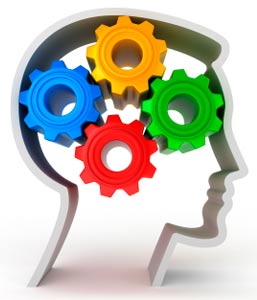Our latest course from Dr. David Van Nuys is:
Neuroscience and Healing (8 CE Credit Hours)
Comprised of 8 audio interviews with renowned experts,
including Stanley Keleman, Bruce Ecker, Mark Solms, and Jaak Panksepp.

What an exciting time we do live in! Our knowledge of neuroscience is exploding and, fortunately, this influx of new knowledge has important implications both for understanding the healing process as well as for refining our psychotherapeutic techniques. For the past 100 years, the world of psychotherapy was balkanized into competing schools: Freudian psychoanalysis, Jungian analysis, CBT, Rogerian therapy, CBT, Gestalt Therapy, ACT and EMDR to name but a few. Looking into the future, there is the hope that neuroscience will trump these individual schools by allowing us to understand what works and how it works. Research on psychotherapy has already revealed that the “flavor” or type of psychotherapy is not nearly as important as the person of the psychotherapist and the quality of the relationship developed with the client.
The world of psychotherapeutic healing can be roughly divided into two camps: the “talk-therapy” camp and the somatic therapy camp. We used to think of these two approaches as very separate. Increasingly, with the help of modern neuroscience, we are discovering quite a bit of overlap and realizing that it’s not either/or. Somatic approaches have been seen as a way of directly addressing the organism via physicality. Our expanding knowledge of brain plasticity reveals that talk-therapy is also a physical intervention, able to produce measurable changes in the architecture of the brain.
Did You Know:
- That talk therapy is a neurobiological intervention?
- There is a five-hour window in which traumatic memories can be erased and replaced with more benign cognitive imprints?
- The psychiatric medications in use today were discovered accidentally?
- “Big pharma” finds it too expensive to develop new psychiatric drugs based on the latest findings of neuroscience?
- “According to current neuroscience, only the reconsolidation process allows new learning to eliminate an existing unwanted learning.” – Bruce Ecker
- “It’s very important for therapists to understand implicit memory and that’s a big part of what we got from neuroscience before reconsolidation. Implicit memory is learnings and knowings that you have without being aware of them whatsoever.” – Bruce Ecker
- “You can actually eliminate, delete, erase the very roots, emotional roots and neurological roots of unwanted emotional responses through the reconsolidation process.” – Bruce Ecker
- “Many, many people are seeing reconsolidation as one of the keys to psychotherapy, that a memory is not forever and ever like Mt. Everest. ” – Jaak Panksepp
- “By bringing emotional material up… at those moments of transition, when it goes back into the memory store, we’ve found that it’s wise for the therapist to bring up a positive affect.” – Jaak Panksepp
- “PTSD is based on the retention in unconscious memory, procedural memory all of the events, sensory and motor events of the trauma and they keep coming back with cues in the environment.” – Robert Scaer
- “We need to find a way of accessing the cues that are in our memory bank for trauma, while turning off the amygdala… somehow switching it off.” – Robert Scaer
- “Out of understanding better the brain mechanisms of our mental processes, alterations in our therapy technique will definitely ensue.” -Mark Solms